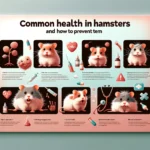What Do Hamsters Like To Eat – Hamsters.pk
Hamster diet basics: Understanding your furry friend’s nutritional Needs
As a responsible hamster owner, it’s crucial to understand the dietary requirements of your tiny companion. Providing a well-balanced diet is essential for maintaining your hamster’s overall health and happiness. In this article, we’ll explore the fundamentals of a hamster’s nutritional needs and how you can ensure your furry friend receives the best possible care.
The importance of a balanced diet
Just like humans, hamsters require a balanced diet to thrive. A diet lacking in essential nutrients can lead to various health problems, such as obesity, diabetes, and digestive issues. On the other hand, a well-balanced diet can help keep your hamster’s teeth and digestive system healthy, maintain a shiny coat, and promote a long, happy life.
Commercial hamster food: A convenient option
One of the easiest ways to provide a balanced diet for your hamster is by offering commercial hamster food. These pre-packaged mixes typically contain a variety of seeds, grains, and pellets that are specifically formulated to meet your hamster’s nutritional needs. When selecting a commercial food, look for a high-quality brand that lists a variety of ingredients and has minimal artificial additives.
Fresh fruits and vegetables: A tasty supplement
In addition to commercial food, hamsters can benefit from a variety of fresh fruits and vegetables. These foods provide additional vitamins, minerals, and fiber to your hamster’s diet. Some hamster-friendly options include:
- Carrots
- Cucumber
- Leafy greens (e.g., lettuce, spinach)
- Apples (seedless and in moderation)
- Berries (e.g., strawberries, blueberries)
Remember to introduce new foods gradually and in small quantities to avoid digestive upset. Always remove any uneaten fresh food from your hamster’s cage to prevent spoilage.
Water: The essential nutrient

Along with a balanced diet, access to fresh, clean water is crucial for your hamster’s health. Ensure that your hamster always has a water bottle or bowl filled with water. Regular cleaning of the water container is important to prevent bacterial growth and maintain your hamster’s health.
By understanding your hamster’s nutritional needs and providing a balanced diet consisting of commercial food, fresh produce, and clean water, you can help your furry friend live a long, healthy, and happy life.
Top 10 favorite foods that hamsters love to munch on
Hamsters are adorable little creatures that love to eat! As a pet owner, it’s essential to provide your furry friend with a balanced diet that includes a variety of tasty and nutritious foods. In this article, we’ll explore the top 10 favorite foods that hamsters love to munch on, ensuring your pet stays happy and healthy.
1. Hamster pellets
Commercial hamster pellets are a staple in any hamster’s diet. These specially formulated pellets provide a balanced mix of nutrients, including protein, fiber, and essential vitamins and minerals. Make sure to choose a high-quality brand and offer pellets as the main component of your hamster’s diet.
2. Carrots
Carrots are a favorite among hamsters, and for a good reason! These crunchy vegetables are packed with nutrients like beta-carotene, fiber, and vitamin C. Plus, they help keep your hamster’s teeth trimmed and healthy. Offer small, bite-sized pieces of carrot as a tasty treat.
3. Broccoli
Broccoli is another nutritious vegetable that hamsters enjoy. Rich in vitamin C and fiber, broccoli can help support your hamster’s digestive health and boost their immune system. Offer small florets of broccoli as an occasional treat.
4. Apples
Apples are a sweet and juicy treat that hamsters love. However, it’s crucial to remove the seeds and offer only small pieces, as apples are high in sugar. Apples provide your hamster with fiber, vitamin C, and antioxidants.
5. Sunflower seeds
Sunflower seeds are a favorite among hamsters, but they should be offered sparingly due to their high-fat content. These seeds are rich in vitamin E, magnesium, and healthy fats. Offer a few sunflower seeds as a special treat.
6. Cucumber
Cucumbers are a refreshing and hydrating treat for hamsters. They are low in calories and high in water content, making them an excellent choice for hamsters prone to obesity. Offer small, bite-sized pieces of cucumber as a tasty snack.
7. Leafy greens
Leafy greens like lettuce, spinach, and kale are packed with vitamins and minerals that support your hamster’s overall health. These greens provide fiber, vitamin K, and antioxidants. Offer a small leaf or two as a fresh addition to your hamster’s diet.
8. Berries
Berries like strawberries, raspberries, and blueberries are a sweet and nutritious treat for hamsters. These fruits are rich in antioxidants, vitamin C, and fiber. Offer a small berry or two as an occasional treat, and make sure to remove any uneaten fruit to prevent spoilage.
9. Plain yogurt
Plain yogurt is a calcium-rich treat that can help support your hamster’s bone health. Offer a small spoonful of plain, low-fat yogurt as an occasional treat. Avoid flavored yogurts, as they often contain added sugars.
10. Whole grain pasta or bread
Whole grain pasta or bread can be offered as an occasional treat to add variety to your hamster’s diet. These complex carbohydrates provide fiber and B vitamins. Offer a small piece of cooked whole grain pasta or a tiny piece of whole grain bread.
Remember to introduce new foods gradually and in moderation to avoid digestive issues. By offering a variety of these tasty and nutritious treats, you can keep your hamster happy, healthy, and satisfied!
Foods to Avoid : What you should never feed your hamster
As a responsible hamster owner, it’s crucial to understand not only what your furry friend can eat but also what they should avoid. Certain foods can be harmful or even toxic to hamsters, leading to serious health problems. In this article, we’ll discuss the foods you should never feed your hamster to ensure their safety and well-being.
Citrus fruits
While many fruits are safe for hamsters, citrus fruits such as oranges, lemons, and grapefruits should be avoided. These fruits are too acidic for hamsters and can cause digestive issues, stomach upset, and even mouth sores.
Onions and garlic
Onions and garlic are toxic to hamsters and can cause a range of health problems, including anemia and digestive issues. These foods contain compounds called thiosulfates, which can damage your hamster’s red blood cells, leading to serious health complications.
Chocolate and caffeine
Chocolate and caffeine are strict no-nos for hamsters. These foods contain theobromine and caffeine, which are toxic to small animals. Ingesting these substances can cause heart problems, seizures, and even death in hamsters.
Raw beans
Raw beans, particularly kidney beans, contain a toxic compound called phytohemagglutinin. This substance can cause severe digestive issues and even be fatal for hamsters. Always avoid feeding your hamster raw beans.
Junk food
Junk food, such as chips, candy, and cookies, should never be given to hamsters. These foods are high in fat, sugar, and salt, which can lead to obesity, diabetes, and other health problems. Stick to a balanced diet of hamster-safe foods to keep your pet healthy.
Rhubarb and tomato leaves
While the fruit of rhubarb and tomatoes is safe for hamsters in small amounts, the leaves of these plants are toxic. Rhubarb and tomato leaves contain high levels of oxalates and solanine, respectively, which can cause digestive issues, kidney problems, and even neurological damage.
Raw potatoes and potato plants
Raw potatoes and potato plants contain solanine, a toxic compound that can cause digestive issues and neurological problems in hamsters. Always avoid feeding your hamster raw potatoes or any part of the potato plant.
Moldy or spoiled food
Moldy or spoiled food should never be given to hamsters. These foods can contain harmful bacteria, toxins, and fungi that can cause serious health problems, such as digestive issues and respiratory infections. Always discard any uneaten fresh food from your hamster’s cage to prevent spoilage.
By avoiding these harmful foods and sticking to a balanced diet of hamster-safe options, you can help your furry friend live a long, healthy, and happy life. Remember, if you’re ever unsure about a particular food, it’s always best to err on the side of caution and avoid feeding it to your hamster.
Providing variety in your hamster’s diet for optimal health and happiness
As a devoted hamster owner, you want to ensure that your furry companion receives the best possible care, and a crucial aspect of this is providing a balanced and varied diet. Just like humans, hamsters thrive on a diverse range of foods that offer a wide array of nutrients. In this article, we’ll explore the importance of variety in your hamster’s diet and how you can achieve this for optimal health and happiness.
The benefits of a varied diet
A varied diet is essential for several reasons:
- Nutrient balance: Different foods offer different vitamins, minerals, and macronutrients. By providing a variety of foods, you ensure that your hamster receives a well-rounded mix of nutrients necessary for good health.
- Preventing boredom: Hamsters can become bored with the same food day after day. Offering a variety of tastes and textures keeps mealtimes interesting and enjoyable for your pet.
- Encouraging natural foraging behaviors: In the wild, hamsters forage for a diverse range of foods. By providing variety in their diet, you encourage these natural behaviors, which can help reduce stress and promote mental stimulation.
Components of a varied hamster diet
A well-rounded hamster diet should include the following components:
- Commercial hamster food: A high-quality, store-bought hamster food should make up the majority of your pet’s diet. Look for a blend that contains a variety of seeds, grains, and pellets fortified with essential vitamins and minerals.
- Fresh fruits and vegetables: Offer small amounts of fresh produce to supplement your hamster’s diet. Some excellent options include carrots, cucumber, leafy greens, and small pieces of apple or berry. Introduce new foods gradually to avoid digestive upset.
- Protein sources: Hamsters require some protein in their diet for proper growth and maintenance. Good sources include small amounts of cooked egg, mealworms, and crickets.
- Treats: Offer hamster-safe treats in moderation to add variety and excitement to your pet’s diet. Examples include sunflower seeds, whole grain pasta, and plain, low-fat yogurt.
Tips for introducing variety
When introducing new foods to your hamster’s diet, keep the following tips in mind:
- Introduce new foods gradually: Start with small amounts of new foods to allow your hamster’s digestive system to adjust. Monitor your pet for any signs of digestive upset, such as diarrhea or loss of appetite.
- Rotate foods regularly: Offer different foods on a rotating basis to ensure your hamster receives a wide range of nutrients and to prevent boredom.
- Remove uneaten fresh food: Always remove any uneaten fresh produce from your hamster’s cage within a few hours to prevent spoilage and the growth of harmful bacteria.
- Monitor portion sizes: While variety is important, it’s crucial to keep portion sizes appropriate to prevent obesity. A balanced diet and portion control will help keep your hamster at a healthy weight.
By providing a varied diet that includes commercial food, fresh produce, protein sources, and occasional treats, you can ensure that your hamster receives the nutrients they need for optimal health and happiness. Your furry friend will thank you for the exciting and diverse meals you lovingly prepare!












